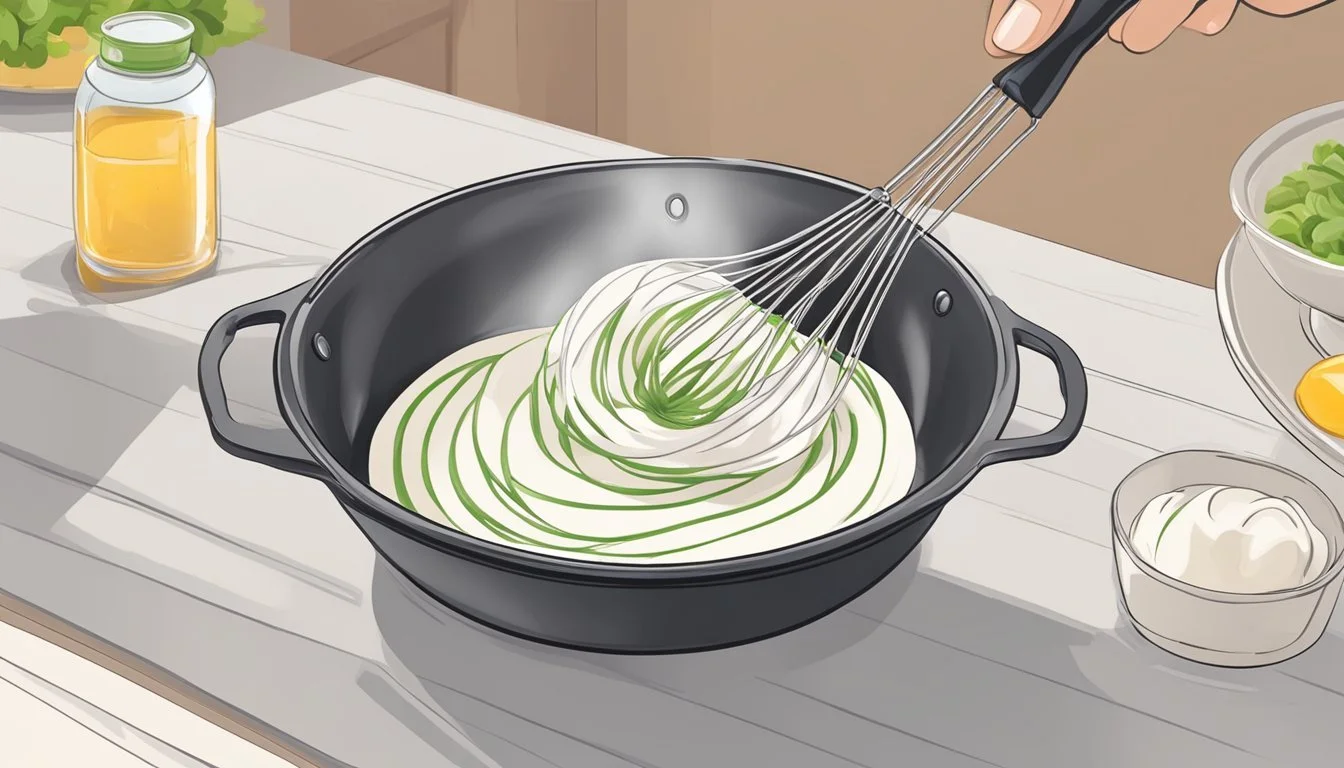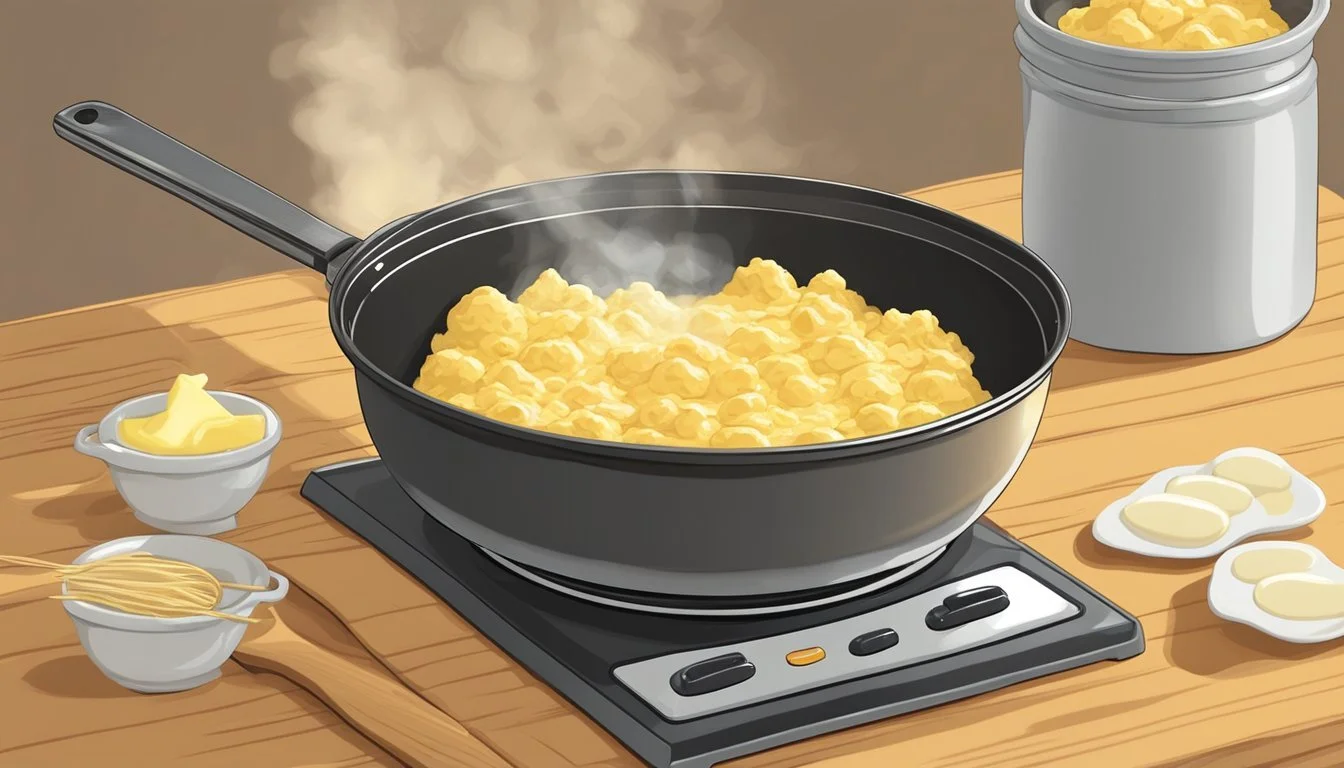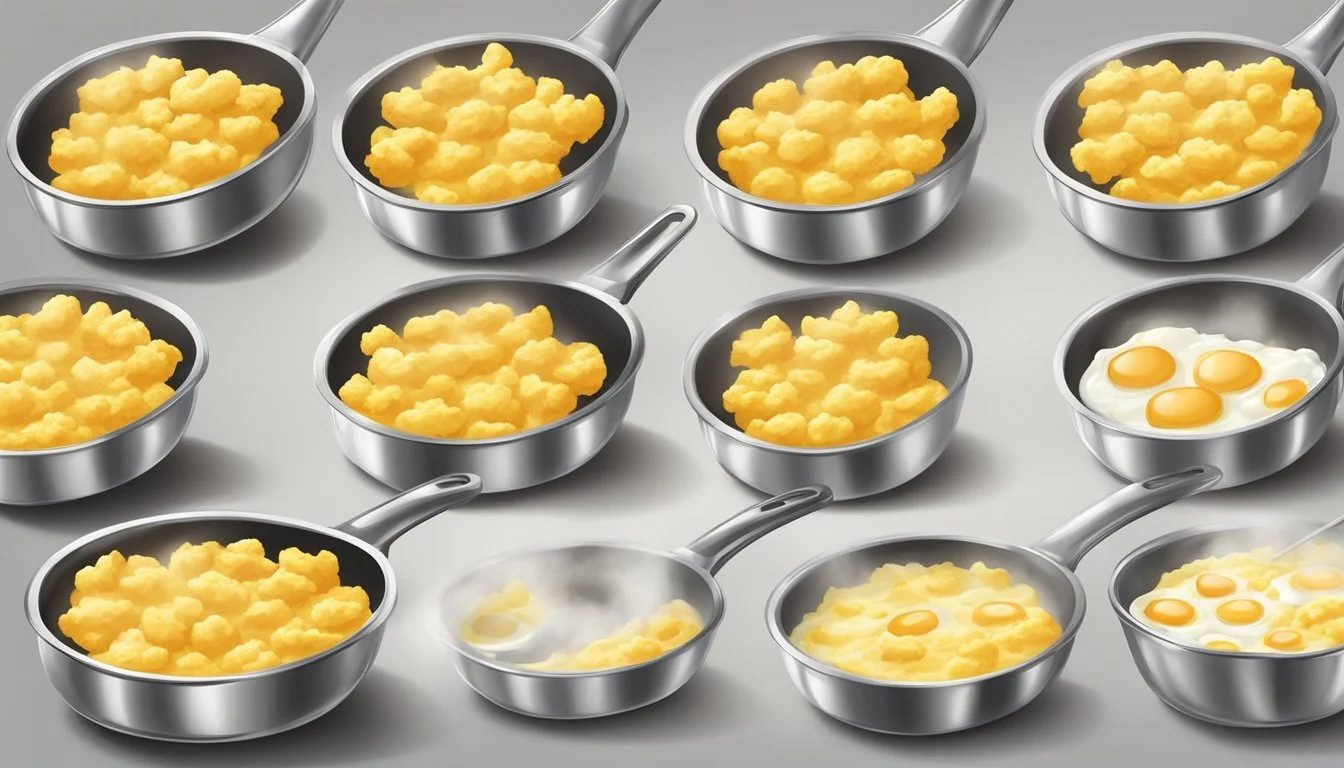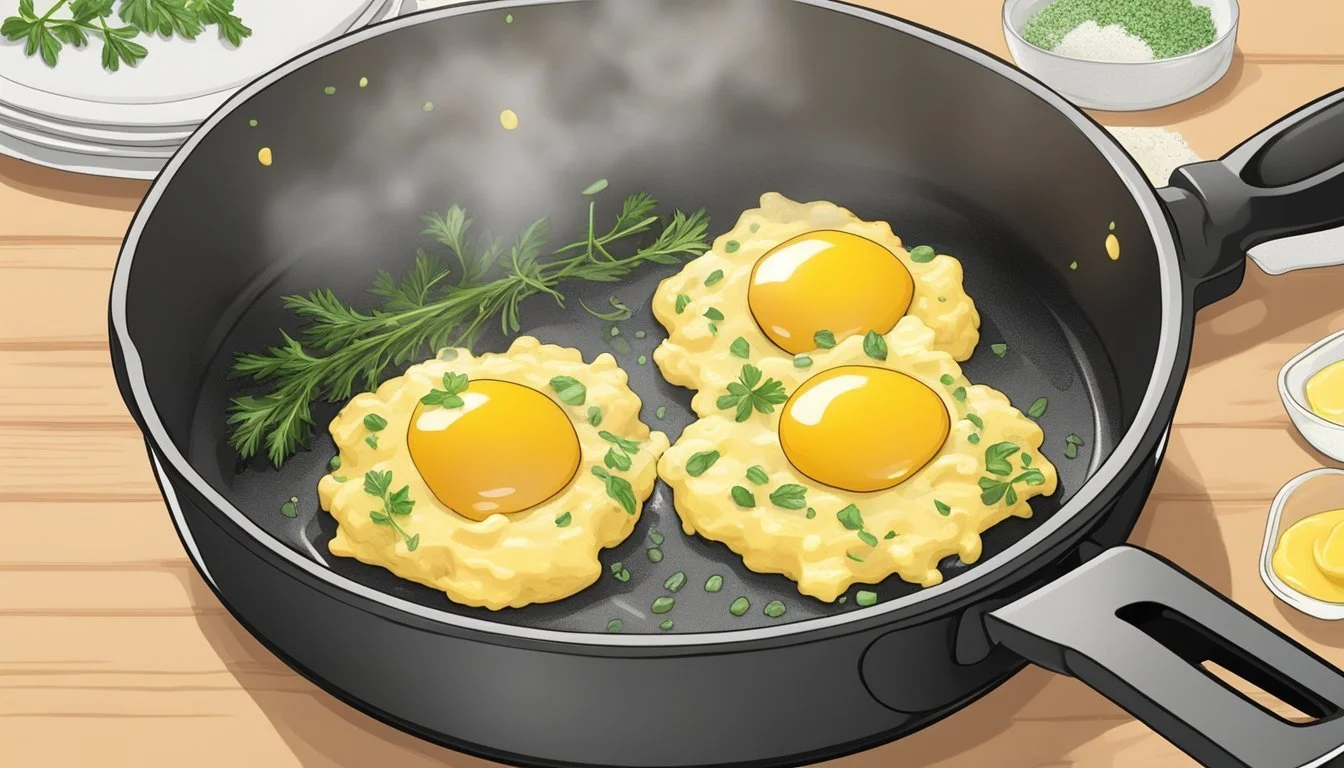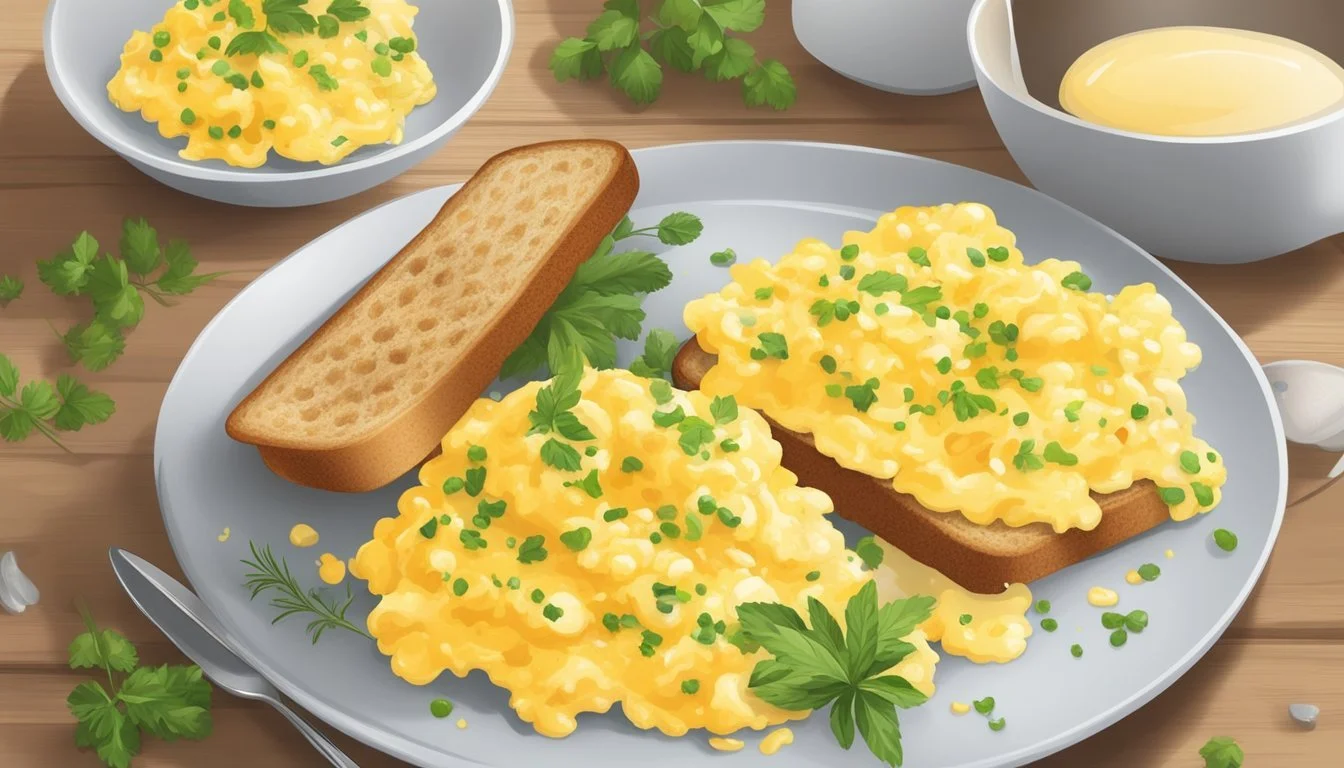Saving Overcooked Eggs
Tips for Achieving Soft and Fluffy Scrambles
Scrambled eggs are a breakfast staple valued for their simple preparation and rich, comforting taste. Achieving that perfect texture—soft, fluffy, and creamy—often hinges on precise cooking technique and timing. Regrettably, mistakes can happen, leading to overcooked scrambled eggs that are tough, chewy, and reminiscent of rubber. This unfortunate outcome is typically due to eggs being cooked too quickly, over high heat, or left on the heat for too long, causing the proteins to constrict excessively and expel moisture.
Despite this mishap, there are remedial actions that can be taken to save overcooked eggs. The goal of rescuing them involves reintroducing moisture and fat, which can help mitigate dryness and improve mouthfeel. Various culinary tactics, such as incorporating dairy products like cream cheese or whole milk, have been suggested as effective ways to restore some of the lost creaminess and tenderness to the eggs.
Understanding the causes and exploring potential solutions for overcooked scrambled eggs not only salvages an otherwise lackluster meal but also educates cooks on how to avoid similar issues in the future. Through careful heat management and by learning a few recovery techniques, cooks can ensure their scrambled eggs remain a delightful and reliable dish.
Understanding Egg Cookery
In the realm of egg cookery, key factors like heat management and moisture retention are pivotal for avoiding the all-too-common rubbery texture associated with overcooked eggs. Eggs are a delicate protein that demand careful attention during preparation.
The Science of Proteins
Eggs are rich in proteins that begin to coagulate, or set, when exposed to heat. The proteins in eggs unfold and bond together when cooked, a process that traps water and air to create a light, fluffy texture. However, applying too much heat can cause these proteins to squeeze out the moisture they've trapped, leading to a rubbery texture. Here's a focused breakdown:
Temperature: Proteins begin to coagulate at temperatures as low as 144°F for egg whites and 149°F for egg yolks. The ideal cooking temperature for tender scrambled eggs is just above this threshold.
Moisture: Eggs contain a significant amount of water, which contributes to their ability to create a soft texture. Protecting this moisture is key to ensuring a fluffy outcome.
Heat Application: Low and slow cooking allows proteins to bond without expelling moisture, whereas high heat causes rapid coagulation and moisture loss, resulting in overcooked and rubbery eggs.
The goal is to heat eggs just enough so that the proteins set without over-tightening. This delicate balance preserves the inherent moisture of the eggs, leading to a tender and enjoyable texture in the final product.
Tools and Techniques
When it comes to rescuing overcooked eggs and achieving a soft, fluffy scramble, the equipment used and the techniques applied play a crucial role. Selecting the appropriate pan, managing the temperature, and using the right spatula can significantly influence the texture and outcome of your scrambled eggs.
Choosing the Right Pan
A nonstick pan is key for cooking eggs effectively, as it allows for easy release of the eggs without sticking and reduces the need for excess fat. A preferred choice would be a nonstick pan that evenly distributes heat. This helps in avoiding hotspots that can further overcook the eggs.
Pan Material: Aim for heavyweight aluminum or anodized nonstick pans for even heat distribution.
Size: A pan too large for the amount of eggs can cause thinning and overcooking; choose a size that suits your portion.
Heat Management
Proper heat management is fundamental. Start with medium-low heat to cook the eggs gently; high heat can cause rapid evaporation of moisture, making scrambled eggs dry and rubbery. One can start by preheating the pan with a stable fat like olive oil to create a nonstick surface and then adjust the heat as required.
Preheat your pan to just the right temperature where a drop of water sizzles upon contact.
Adjust heat as needed—from medium-low to low—to avoid rapid protein coagulation.
The Importance of a Good Spatula
A spatula can make or break your scrambled eggs. A silicone spatula is preferable for its flexibility and nonstick-friendly properties, enabling gentle folding and reducing the risk of the eggs sticking and overcooking. A rubber spatula with its soft edges ensures that you can scrape the eggs from the corners of the pan without damaging the surface. Avoid using a wooden spoon as it can be too harsh on the eggs and doesn't provide the same level of precision.
Material: Use a heat-resistant silicone or rubber spatula for best results.
Technique: Employ a gentle folding motion, rather than vigorous stirring, for pillowy eggs.
Preparation Fundamentals
Achieving soft and fluffy scrambled eggs begins with mastering the basics of egg preparation. Proper technique in cracking, whisking, and seasoning is crucial for desired texture and taste.
Cracking and Whisking Eggs
When preparing to scramble eggs, one should first crack the eggs into a small bowl. Each egg must be fully cracked to ensure the yolk and whites can blend smoothly. One uses a whisk or a fork to combine them until they reach a uniform color. The goal is to incorporate air, which aids in achieving a fluffy texture. Vigorous whisking is the key.
Whisking Time: Generally, 1-2 minutes or until evenly colored and slightly frothy.
Tool: Whisk or fork.
Seasoning and Add-ins
Correctly seasoning the eggs before cooking greatly enhances their flavor. Adding salt and pepper according to taste should be done while whisking, as this allows the seasonings to distribute evenly.
For those looking to enrich their eggs, incorporating cheese is a common choice. Cream cheese can add creaminess, cheddar brings a sharper taste, and parmesan imparts a nutty flavor. Fresh herbs, like chopped chives, are added for a burst of freshness and color.
Seasonings:
Salt (to taste)
Pepper (to taste)
Add-ins (Optional):
Cheese (e.g., cream cheese, cheddar, or parmesan)
Fresh herbs (e.g., chives)
One should select their preferred fat—butter or oil—to cook the eggs. Butter can enhance the flavor, while oil may lead to a lighter finish. The choice of fat can affect both the texture and taste of the final product.
Cooking Perfect Scrambled Eggs
The quest for perfect scrambled eggs can be simplified by understanding heat management, proper beating for air incorporation, and the balance of cooking time.
The Soft Scramble
One achieves a soft scramble by using low heat, which allows the eggs to set gently without hurrying the cooking process. It's important to patiently cook the eggs, as rushing can lead to a rubbery consistency. To ensure eggs remain creamy and soft, they should be stirred frequently and removed from the heat when they're still slightly runny, allowing the residual heat to finish the cooking.
Achieving Fluffiness
Fluffiness in scrambled eggs is primarily about technique and incorporating air. This begins with beating the eggs until they are well mixed, introducing as much air as possible to ensure fluffy scrambled eggs. Gentle cooking is the key—over high heat, eggs will quickly dry out. One should keep the heat at medium-low and avoid over-stirring while the eggs set into large, airy curds.
Managing Doneness
The control of doneness allows cooks to prevent overcooked scrambled eggs. Pulling the pan off the heat when the eggs are slightly underdone accounts for carryover cooking, where eggs continue to cook with residual heat after being removed from the stove. This step is crucial to avoid transitioning from soft scrambled eggs to eggs with an undesirable, overcooked texture.
Troubleshooting Common Issues
Perfect scrambled eggs should be soft and fluffy, but overcooking can lead to dryness and a rubbery texture. This section will cover essential tactics for preventing and correcting overcooked eggs.
Preventing Overcooked Eggs
To ensure scrambled eggs remain tender and moist, one should employ a low and gentle heat. A non-stick skillet is preferable, and the eggs should be cooked slowly to avoid rapid moisture loss. Cooking the eggs in a pan on low heat allows for even cooking and minimizes the risk of overcooking.
Here are specific steps to prevent overcooking:
Heat: Begin with a low to medium-low heat and maintain it throughout cooking.
Pan Size: Choose an appropriately sized pan for the number of eggs to ensure even cooking.
Timing: Remove the eggs from heat slightly before they're fully set, as they will continue to cook with residual heat.
Texture Restoration Techniques
If one's scrambled eggs have already reached a rubbery consistency, there are methods to improve their texture. Adding dairy can reintroduce moisture. A spoonful of cream cheese, for instance, can partly restore creaminess with its mild acidity and fatty content.
To revive the texture of overcooked scrambled eggs, consider:
Dairy Addition: A small amount of cream cheese, sour cream, or regular cream stirred in can help soften the eggs.
Heat Removal: Quickly remove the pan from the heat and transfer the eggs to a plate to stop the cooking process.
By employing these techniques, overcooked eggs can be salvaged to an extent, bringing them closer to the desired soft and fluffy outcome.
Enhancement Strategies
When rescuing overcooked scrambled eggs, the key lies in strategic culinary additions and techniques that reintroduce creaminess and flavor. Here's how one can achieve a soft and fluffy texture from a less-than-perfect scramble.
Culinary Additions for Flavor
Bacon: Crisp bacon bits can impart a smoky, savory depth to the eggs. They should be sprinkled on top of the eggs after cooking to maintain their crunchiness.
Spinach: Wilted spinach not only adds nutrition but also provides a subtle, earthy flavor. It can be sautéed separately and then gently folded into the eggs.
Special Tips for Creaminess
Sour Cream: Just a dollop can transform the texture, making the eggs richer and smoother.
Greek Yogurt: For a lighter alternative to sour cream, Greek yogurt can be mixed in. It adds tanginess as well as creaminess, without weighing down the eggs.
Cream Cheese: Introducing cream cheese to overcooked eggs helps in adding a velvety creaminess that counteracts the dryness.
Incorporating these simple yet effective strategies can elevate the quality of overcooked eggs, rendering them enjoyable despite initial mishaps.
Serving and Presentation
The enjoyment of scrambled eggs extends beyond flavor, touching on the careful choice of accompaniments and the artistry of plating. These elements combine to create a visually appealing and satisfying breakfast experience.
Accompaniment Suggestions
Scrambled eggs are truly versatile, pairing well with a variety of breakfast staples. To maintain a classic approach, toast serves as a simple yet perfect complement, offering a textural contrast to the eggs' softness. For a heartier meal, hash browns or a breakfast burrito incorporating eggs can provide a satisfying option. Those looking for a lighter pairing might appreciate a fruit salad, which provides a fresh, sweet counterpoint to the savory eggs. To craft a beloved Tex-Mex dish, one can tuck scrambled eggs into a tortilla to create a breakfast taco, layered with ingredients such as cheese, salsa, and avocado.
Classic: Toast
Hearty: Hash Browns, Breakfast Burrito
Light: Fruit Salad
Tex-Mex: Breakfast Taco
Plating Techniques
A well-presented plate of scrambled eggs should look as inviting as it tastes. For a clean and elegant presentation, serve the eggs on a warm plate to keep them at an ideal temperature. The eggs themselves should be the star, so plate them centrally with any accompaniments arrayed neatly around. Use brightly colored garnishes such as fresh herbs or a sprinkle of paprika to add visual interest and a pop of color. If serving eggs as part of a breakfast burrito or taco, ensure the filling is well-distributed for a harmonious bite and visually appealing cross-section when sliced.
Warm Plate: Keeping eggs at ideal temperature
Central Plating: Eggs as the focal point
Garnishes: Fresh herbs or paprika
Well-Distributed Fillings: For burritos and tacos
Nutritional Information
Scrambled eggs are a staple in a healthy breakfast recipe, offering a good balance of protein and other nutrients.
Caloric Content and Health Benefits
Scrambled eggs deliver high-quality protein, which is crucial for muscle repair, immune function, and overall health. The specific calorie count for scrambled eggs can vary based on cooking methods and additional ingredients. On average, one large scrambled egg contains about:
Calories: 91 kcal
Protein: 6.7 g
Fat: 6.7 g
Saturated fat: 2 g
Unsaturated fat: 4.7 g
In addition to protein, scrambled eggs are a source of essential vitamins and minerals such as Vitamin B12, D, A, and iron, which are vital for maintaining good health.
Embracing scrambled eggs can contribute to a healthy diet when prepared with limited added fats and served with other nutritious foods like vegetables, whole grains, or lean proteins. They are particularly beneficial in the morning, as the protein content can assist in satiety and provide energy throughout the day.
Variations and Alternatives
Even overcooked eggs can be revived with the right techniques and additions. In exploring variations and alternatives to traditional scrambled eggs, one can introduce new ingredients or cooking methods to enhance both flavor and texture.
Recipe Adjustments
Amending the original egg recipe by incorporating additional ingredients can drastically improve overcooked eggs. For example, a dollop of cream cheese can reintroduce creaminess, while a sprinkle of dried thyme or red pepper flakes can add a new flavor profile. An expert tip is to blend in a small amount of ricotta cheese for a rich, yet light, texture. Here are two quick fixes:
For a creamy touch: Add 1 tablespoon of cream cheese per every three eggs and mix thoroughly.
For added flavor: Sprinkle in a pinch of dried thyme or red pepper flakes according to taste preferences.
Alternative Cooking Methods
One might also consider altering the cooking method to prevent overcooking in the future or to remedy slightly overcooked eggs. For instance, cooking eggs on low heat can allow more control over the cooking process. Additionally, removing the cooking vessel from the heat before the eggs are completely set lets the residual heat finish the cooking gently. Here's a brief outline:
Low Heat Technique: Start with a cold pan, add eggs, and cook slowly over low heat, stirring frequently.
Residual Heat Method: Remove eggs from the heat when they are still slightly underdone and let the residual heat do the rest.
FAQs and Expert Advice
In this section, the reader will find answers to common questions about scrambling eggs and tips from cooking experts to ensure a delicious outcome.
Recipe FAQs
Can you save overcooked scrambled eggs?
Yes, adding a small amount of cream cheese can restore creaminess.
What causes scrambled eggs to become tough and rubbery?
Overcooking eggs causes proteins to tighten and release moisture, resulting in a dry texture.
What is the best heat setting to cook scrambled eggs?
Scrambled eggs should be cooked on low to medium-low heat.
Expert Tips
Achieving Soft, Creamy Texture:
Cook eggs slowly on low heat, stirring occasionally to allow even cooking without expelling too much moisture.
Avoiding Overcooking:
Remove eggs from heat just before they're fully cooked; residual heat will finish cooking them.
Enhancing Fluffiness:
Whisk vigorously before cooking to incorporate air into the eggs.
Use these guidelines to ensure your scrambled eggs are soft, creamy, and perfectly cooked every time.
Storage and Leftovers
When it comes to storing scrambled eggs, proper techniques can extend their shelf life while retaining quality. The right storage method ensures that leftovers remain safe and tasty for future consumption.
Storing Scrambled Eggs
To store scrambled eggs effectively, let them cool down completely before placing them into storage containers. For optimal freshness, store them in airtight containers within two hours of cooking. In the refrigerator, scrambled eggs can be kept for up to three to four days. If one wishes to store them longer, scrambled eggs can be frozen and are best used within a year. Label freezer bags with the date before storing to keep track of their longevity.
Refrigerator:
Cool completely
Store within 2 hours of cooking
Use airtight containers
Consume within 3-4 days
Freezer:
Freeze in labeled bags
Best if used within 1 year
Reheating for Best Quality
When reheating scrambled eggs, the goal is to restore their original texture and warmth without overcooking them. Microwave reheating should be done on medium power in short intervals, stirring in between to promote even heating. Covered stovetop reheating on low heat with a dash of milk or water can help retain moisture, resulting in softer eggs. If scrambled eggs were frozen, thaw them in the refrigerator overnight before reheating.
Microwave:
Medium power
Short intervals
Stir to heat evenly
Stovetop:
Low heat
Add milk or water
Thaw if frozen before reheating
Conclusion
Scrambled eggs need not be the casualty of overcooking. By integrating simple rescue techniques, they can be restored to a more palatable state. Adding a dairy product, such as cream cheese or heavy cream, can reintroduce moisture and creaminess to the eggs. Cold dairy acts quickly to cool down the eggs, stopping the cooking process and adding richness.
For a textural adjustment, cooks can incorporate additional ingredients to offset the rubbery consistency. Ingredients like soft herbs or cheese can add both flavor and a desirable mouthfeel. These additions should be folded in gently to avoid further compaction of the eggs.
In kitchens everywhere, the understanding that all is not lost with overcooked scrambled eggs relieves cooks. Remember that the key is a swift response and the use of accessible ingredients that can remedy dryness and restore texture.
One should always aim for prevention, but when that fails, these strategies transform overcooked scrambled eggs back into a delectable dish. Scientists and culinary experts agree that a mastery of these techniques elevates a simple meal into a sublime experience. Whether an accidental slip or a learning curve in one's cooking journey, the path back to soft, fluffy scrambled eggs is well within reach.


